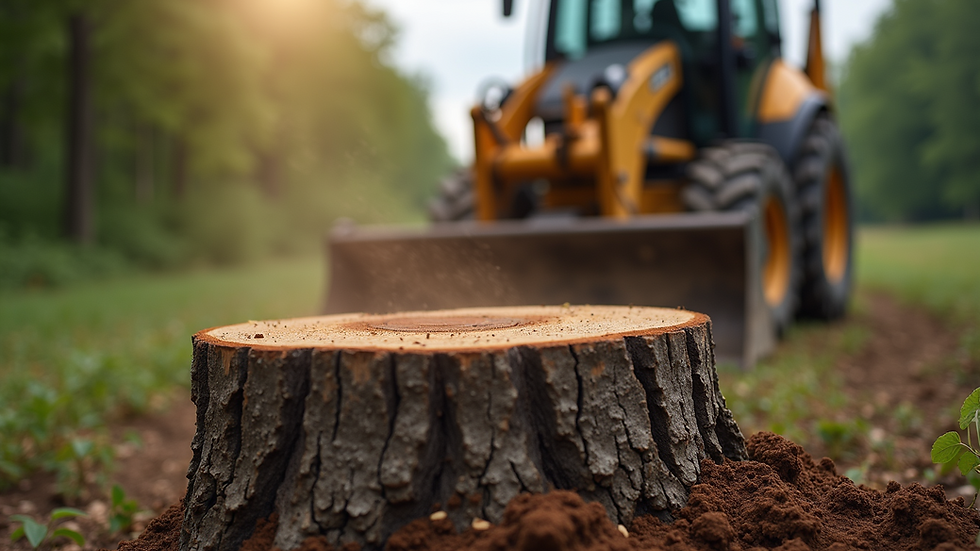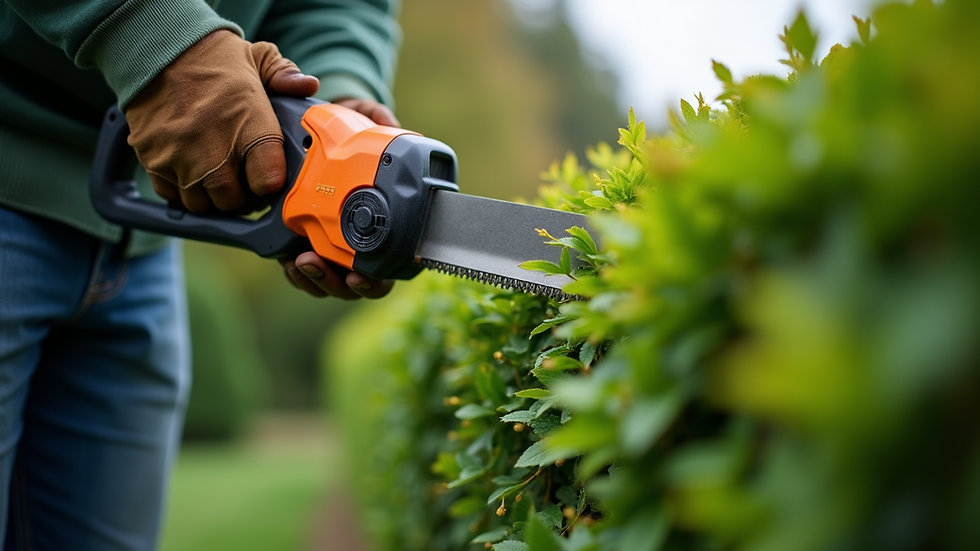Efficient Ways to Remove Tree Stumps
- leelinnen
- Jul 27
- 4 min read
Removing tree stumps can be a daunting task for many homeowners. Whether you're looking to improve the aesthetics of your garden or make way for new landscaping, stumps can be unsightly and obstructive. Fortunately, there are several efficient methods to eliminate them, each with its own pros and cons. In this blog post, we will delve into effective tree stump removal methods to help you choose the best option for your needs.
Tree Stump Removal Methods
When it comes to tree stump removal, you have various techniques at your disposal. Some methods are quick and efficient, while others may take longer but are more environmentally friendly. Below are some commonly used methods of tree stump removal.
1. Manual Removal
One of the oldest and most traditional methods for removing tree stumps is manual extraction. This method involves using tools such as a shovel, axe, and a chainsaw. Here’s a step-by-step guide on how to do it:
Dig Around the Stump: Start by digging a trench around the stump. Make sure to expose the roots as much as possible.
Cut the Roots: Use a chainsaw or an axe to cut the roots as you uncover them.
Leverage the Stump: Once the roots are severed, you can use a pry bar to leverage the stump out of the ground.
While this method can be labor-intensive, it is often the most thorough and does not leave any chemicals or residual materials behind.

2. Chemical Removal
Using chemicals is another common method for removing tree stumps. One popular option is Epsom salt, which can speed up the decomposition process of the stump.
How Long Does It Take for a Tree Stump to Rot with Epsom Salt?
Epsom salt works by dehydrating the stump. When applied correctly, it can take as little as 4 to 6 weeks for the stump to start rotting, although complete decomposition may take several months. Here’s how to use Epsom salt for stump removal:
Drill Holes: Make several holes in the top of the stump, about 8 inches apart.
Add Epsom Salt: Fill the holes with Epsom salt and then add water to help the salt penetrate.
Cover the Stump: Cover with a tarp to keep moisture in and prevent rain from washing it away.
This eco-friendly method is ideal if you're not in a hurry and want to minimize chemical usage.

3. Grinding
Stump grinding is a fast and effective method for those who want to remove the stump but leave the roots intact. This process involves using a stump grinder, which is a specialized machine designed to grind the stump down to below soil level. Here are some pros and cons to consider:
Pros: Quick and efficient; leaves little debris; roots can remain in place.
Cons: Requires access to specialized machinery; can be expensive if hired.
Hiring a professional service is often recommended for stump grinding since they have the equipment and expertise to do it safely.
4. Burn the Stump
If local regulations allow it, burning the stump can be an effective removal method. Here’s how to do it safely:
Prepare the Stump: Cut the stump as close to the ground as possible. You may want to make cuts in the stump to promote faster burning.
Use Kindling: Place dry wood or leaves on top of the stump and light it.
Monitor the Burn: Make sure to watch the fire carefully and assure it doesn’t spread.
This method can be risky and may not be legal in all areas, so be cautious and check your local regulations before proceeding.
Note: Be cautious when using fire for stump removal; always have water or a fire extinguisher handy.

5. Natural Decomposition
If you're not in a rush, allowing the stump to decompose naturally is the easiest and environmentally friendly method. You can help speed up the process by:
Moistening the Stump: Regularly water the stump to keep it moist.
Covering it with Mulch: Add mulch around the stump to retain moisture and promote bacterial growth.
This method may take several months to years for complete decomposition but is best for those who want a green solution.
Choosing the Right Method for Your Needs
When it comes to selecting the best approach for removing tree stumps, consider the following factors:
Timeline: If you need immediate results, grinding or chemical methods might be best.
Budget: Manual removal and natural decomposition are less costly, while stump grinding can be more expensive.
Environmental Considerations: If you prefer an eco-friendly solution, using Epsom salt or letting it decompose naturally may be ideal.
Before making a decision, evaluate your yard, the size of the stump, and your physical ability to carry out the method effectively.
Hiring a Professional
If the task seems too overwhelming or you simply prefer not to tackle stump removal on your own, hiring a professional service is an excellent option. They possess the right tools, experience, and knowledge to carry out the task safely and efficiently.
Additionally, professional services often include both stump grinding and removal, ensuring a comprehensive solution to your problem. For expert assistance, you can visit this link about removing tree stumps for more information.
Final Thoughts on Tree Stump Removal Methods
When faced with the challenge of tree stump removal, you have several options to consider. From manual digging to chemical applications and professional grinding services, each method has its advantages and disadvantages.
The best choice ultimately depends on your specific situation, including your budget, timeframe, and commitment to environmental sustainability. With the right approach, you can reclaim your yard and create the beautiful outdoor space you desire.

Comments